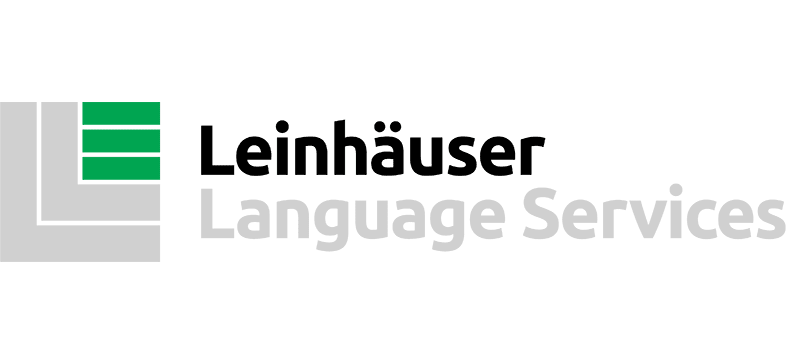As an online marketing specialist, you understand the importance of a comprehensive SEO Copywriting Checklist in crafting high-quality content that ranks well on search engines. This essential guide will delve into various aspects of creating optimized web content, ensuring your pages stand out in search results.
In this blog post, we’ll explore crucial components such as title tag modifiers for increased click-through rates and varying paragraph lengths to improve readability. We’ll also discuss how to craft SEO-friendly URLs and effectively incorporate keywords without overstuffing.
Additionally, you’ll learn about utilizing SEMrush Content Templates for efficient content creation and implementing formatting techniques like headers and white space balance for enhanced readability. Finally, we’ll cover optimizing meta descriptions & title tags while employing internal & external linking strategies alongside analyzing keyword density & distribution.
This advanced-level SEO Copywriting Checklist will equip you with valuable insights to create compelling web content that caters to both search engines and your target audience alike.
SEO Copywriting Essentials
SEO copywriting is crucial for creating content that ranks on search engines and engages your target audience. This section will cover the essential elements of effective SEO copy, including title tag modifiers, paragraph length variation, and keyword usage.
Importance of Title Tag Modifiers in Increasing Click-Through Rates
Title tag modifiers are words or phrases added to your main title to make it more enticing and increase its chances of being clicked by users on search engine result pages (SERPs). Some popular examples include “best,” “top,” “guide,” or “review.”
By incorporating these title tag modifiers, you can improve your click-through rates (CTR) while targeting long-tail keywords with less competition.
Varying Paragraph Lengths for Improved Readability
Avoid writing lengthy paragraphs as they may be difficult for readers to follow. Instead, vary your paragraph lengths by using two-to-three-line paragraphs mixed with longer ones. Breaking up large blocks of text into smaller sections enhances readability and keeps readers engaged throughout the content. For instance:
- Use shorter sentences when explaining complex concepts.
- Add bullet points or numbered lists to present information clearly.
- Incorporate subheadings to organize ideas effectively.
Properly Incorporating Keywords Without Overstuffing
The strategic use of keywords is vital in SEO copywriting; however, overusing them can lead to penalties from search engines like Google. To avoid keyword stuffing while maintaining an optimal density level within your content:
- Target long-tail keywords that are less competitive and more specific to your niche.
- Distribute primary and secondary keywords evenly throughout the content, including headings, subheadings, body text, and meta tags.
- Use synonyms or related terms to maintain a natural language flow without overusing exact-match keywords.
It is essential to understand the fundamentals of SEO copywriting in order to craft effective and engaging content. Crafting SEO-friendly URLs can be an invaluable asset for boosting your website’s search engine rankings.
Crafting SEO-Friendly URLs
An important aspect of optimizing your content for search engines is creating short, descriptive URLs that contain your target keywords. They should include the main keyword and be as short and concise as possible. Search engines usually don’t like lengthy and clumsy URLs.
www.myblog.com/2023/05/the-whole-story-how-i-ended-up-becoming-a-full-time-copywriter
vs
www.myblog.com/how-to-become-a-copywriter
Benefits of Using Short and Descriptive URLs
Shorter and more descriptive URLs offer several advantages when it comes to SEO:
- User experience: A concise URL is easier to read and understand, which can lead to a better user experience. Users are more likely to select a link that clearly conveys the page’s subject matter.
- Better ranking potential: Google has stated that shorter URLs tend to rank higher in search results than longer ones. This may be because they’re less likely to be seen as spammy or low-quality by search algorithms.
- Easier sharing: Shorter links are also easier for users to share on social media platforms or through other communication channels like email or text messages.
Incorporating Target Keywords into URL Structure
To create an effective SEO-friendly URL, you should include your primary target keyword within its structure. This helps signal to both users and search engines what the main topic of your page is about. Here’s how you can do it right:
- Avoid unnecessary words or characters: Keep your URL clean by removing any extra words (such as “and” or “the”) or special characters (like exclamation marks) that don’t contribute meaningfully towards describing the content of the page.
- Maintain readability with hyphens instead of underscores: Use hyphens (-) instead of underscores (_) to separate words in your URL. This makes it easier for both users and search engines to read the URL, as Google treats hyphens as word separators while underscores are not recognized.
- Keep it lowercase: Stick with lowercase letters when crafting URLs, as mixing upper and lower case can lead to confusion or even duplicate content issues if your website’s server is case-sensitive.
To sum up, creating SEO-friendly URLs involves keeping them short, descriptive, and including target keywords within their structure. By following these best practices, you’ll improve user experience and increase the likelihood of ranking higher on search engine results pages (SERPs).
Key Takeaway:
Crafting SEO-friendly URLs is crucial for improving visibility and rankings. Short, descriptive URLs that incorporate target keywords within their structure offer several benefits such as better user experience, higher ranking potential, and easier sharing. To create an effective URL, avoid unnecessary words or characters, use hyphens instead of underscores to maintain readability and keep it lowercase to prevent confusion or duplicate content issues.
Utilizing SEMrush Content Templates
The SEMrush content template can be a valuable tool in ensuring you create high-quality optimized content. In this part, we’ll look into how to make use of this resource with the help of bullet points, brief sentences and straightforward words.
Overview of SEMrush’s Content Template Features
SEMrush’s content template provides a comprehensive analysis of your competitors’ top-ranking pages for specific keywords. It then generates actionable recommendations based on these insights to help improve your own content strategy. Some key features include:
- Suggested text length based on the average word count of top-performing pages
- List of semantically related keywords to incorporate into your copy
- Average readability score among competing articles and suggestions for improvement
- Backlink opportunities from relevant sources within your niche
Implementing Bullet Points to Break Up Text Blocks
Bullet points are an effective way to present information concisely and make it easier for readers to digest complex concepts or lists quickly. When using the SEMrush content template, consider incorporating bullet points when appropriate as they can:
- Increase scannability by breaking up large blocks of text
- Highlight essential information
- Create a more visually appealing layout
- Enhance overall readability
Using Simple Language to Aid Comprehension
Constructing your material necessitates the use of language that is readily understandable to all readers. The SEMrush content template provides readability suggestions based on the Flesch-Kincaid score, which measures how difficult a text is to comprehend. To improve readability and ensure your message resonates with a wider audience:
- Avoid using jargon or complex terminology
- Use shorter sentences
- Break up lengthy paragraphs into smaller sections
- Utilize transition words and phrases
Incorporating these strategies while utilizing the insights provided by the SEMrush content template will help you create engaging, informative, and SEO-friendly copy that appeals to both search engines and users alike.
Key Takeaway:
The SEMrush content template is a useful tool for creating optimized and high-quality content. It provides insights on suggested text length, semantically related keywords, readability score, and backlink opportunities. To enhance the overall readability of your copy, consider using bullet points to break up large blocks of text and simple language that is easy for readers to understand.
Enhancing Readability with Formatting Techniques
Good formatting techniques not only make your writing more visually appealing but also help readers easily navigate through the information presented.
In this section, we’ll dive into some key strategies such as heading hierarchy, white space utilization, and multimedia incorporation.
Organizing Headers Efficiently (H1-H6)
By utilizing heading tags, one can ensure that content is organized in a manner which facilitates easy comprehension and navigation. Headings serve to break up text into sections while providing an overview of what each part discusses. To create an effective hierarchy:
- H1: Use one H1 tag per page to represent the main topic or title.
- H2: Utilize H2 tags for subheadings that divide your content into major sections.
- H3-H6: Employ these tags for further subsections within each primary section, ensuring clear organization throughout your copy.
Balancing White Space Within Paragraphs
Maintaining adequate white space in your content can significantly improve readability by preventing large blocks of text from overwhelming readers. Consider implementing the following tips when crafting paragraphs:
- Aim for short paragraphs consisting of two to four sentences on average.
- Vary paragraph length occasionally to maintain reader interest and avoid monotony.
- Add line breaks between paragraphs or bullet points to create visual separation and enhance scannability.
Adding Images or Videos When Appropriate
Incorporating relevant images or videos within your content can provide additional context and enhance user engagement. When selecting multimedia elements, ensure they:
- Directly relate to the topic being discussed.
- Are properly attributed if necessary (e.g., citing a source for an image).
- Add value to your content without distracting from the main message.
To learn more about optimizing images for SEO purposes, check out this comprehensive guide on image optimization.
Formatting appropriately can guarantee your content is legible and comprehensible. Optimizing meta descriptions and title tags will further enhance the visibility of your website in search engine results pages (SERPs).
Key Takeaway:
To improve the readability of your content, use formatting techniques such as heading hierarchy, white space utilization and multimedia incorporation. Organize headers efficiently by using H1-H6 tags to create a well-structured piece of content. Additionally, balance white space within paragraphs and add relevant images or videos when appropriate to enhance user engagement.
Optimizing Meta Descriptions & Title Tags
Writing compelling meta descriptions and title tags are vital components in driving organic traffic from search engine results pages (SERPs).
In this section, we’ll learn about their importance along with tips on optimizing them effectively according to current standards.
Crafting Attention-Grabbing Meta Descriptions
An engaging and informative meta description can significantly increase the click-through rate of your website. To create a captivating meta description, follow these best practices:
- Keep it between 150-160 characters for optimal display on SERPs.
- Incorporate your primary keyword naturally within the text.
- Avoid using generic phrases or duplicate content across multiple pages.
- Create a sense of urgency or curiosity to entice users to click through to your site.
Including Target Keywords in Title Tags
Title tags play an essential role in conveying what your page is about while also impacting its ranking potential. When crafting an effective title tag, consider these guidelines:
- Place keywords strategically: Include your main keyword at the beginning of the title tag for maximum SEO impact. This not only helps search engines understand the relevance but also catches users’ attention quickly when scanning through SERP listings. Note: Avoid overstuffing keywords as it may result in penalties from Google’s algorithm updates like Panda and Penguin.
- Stay within character limits: Aim for a title tag length of around 60 characters to ensure proper display on SERPs. Longer titles may be truncated, causing potential loss of valuable information.
- Be unique and descriptive: Make sure your title tags accurately describe the content while differentiating it from other pages on your site or competitors’ sites. Crafting unique, descriptive tags can help users comprehend the content they’ll access when clicking through to your page.
Taking the time to optimize meta descriptions and title tags is an essential step in improving your website’s visibility and click-through rates. By following these best practices, you’ll create compelling copy that not only ranks well but also engages with users effectively.
Key Takeaway:
To drive organic traffic from SERPs, it’s crucial to optimize meta descriptions and title tags. Crafting attention-grabbing meta descriptions with a sense of urgency or curiosity can increase click-through rates, while including target keywords strategically in title tags helps convey what the page is about and catch users’ attention quickly. By following these best practices, you’ll create compelling copy that ranks well and engages effectively with users.
Implementing Internal & External Linking Strategies
Properly incorporating internal and external links within your content can significantly improve SEO performance.
In this section, we will discuss the benefits of these linking strategies, as well as best practices to follow when adding them to your copy.
Boosting Domain Authority with Quality External Links
Incorporating high-quality external links in your content not only provides valuable information for readers but also helps boost your domain authority. By linking out to reputable sources, you signal to search engines that your website is a reliable source of information. To ensure maximum impact:
- Select authoritative websites related to your niche or industry.
- Avoid linking out excessively; focus on providing value rather than increasing link count.
- Use descriptive anchor text that accurately reflects the linked content (e.g., instead of “click here,” use “domain authority guide by Moz“).
Enhancing User Experience through Strategic Internal Linking
Besides boosting SEO performance, internal linking plays a crucial role in enhancing user experience on your website. When done strategically, it encourages visitors to explore more pages and spend more time on-site while improving crawlability for search engine bots. Here are some tips for effective internal linking:
- Create an organized site structure with clear navigation paths using categories and subcategories.
- Add relevant contextual links within paragraphs where they naturally fit (e.g., “on-page SEO tips blog post”). This practice helps users find additional resources without disrupting their reading flow.
- Link to cornerstone content, which are in-depth articles that cover essential topics within your niche. This not only showcases your expertise but also helps search engines understand the hierarchy of your website’s content.
- Avoid over-optimizing anchor text for internal links; use natural language variations instead (e.g., “learn more about our SEO services”).
- Regularly audit and update internal links to ensure they remain relevant and functional.
By leveraging both external and internal linking tactics, you can create a comprehensive piece of content that not only pleases users but also satisfies search engine algorithms. Adopting these procedures can aid in bettering the user experience, amplifying domain authority, and ultimately escalating organic traffic to your website.
To ensure that your website has the best chance of success, internal and external linking strategies should be properly implemented. Moving on to keyword density and distribution, it is important to understand how these elements affect SEO copywriting performance.
Key Takeaway:
To improve SEO performance, it’s important to incorporate internal and external linking strategies. External links from authoritative websites can boost domain authority while strategic internal linking enhances user experience by encouraging visitors to explore more pages on your site. Use descriptive anchor text for external links and avoid over-optimizing anchor text for internal links.
Analyzing Keyword Density & Distribution
To achieve a high ranking on search engines, it’s crucial to understand keyword density and distribution throughout your content. In this part, we’ll explore how to analyze these factors effectively while maintaining a natural language flow.
Understanding Ideal Keyword Density Ratios
Keyword density refers to the number of times a target keyword appears in your content compared to the total word count. While there is no specific “ideal” ratio for all cases, most SEO experts recommend aiming for a 1-2% keyword density. This means that if you have 1000 words in your article, you should include your primary keyword approximately 10-20 times.
However, it’s essential not to overdo it with keywords as Google algorithms can penalize websites for excessive use of keywords or “keyword stuffing.” To avoid this issue, focus on creating valuable and informative content rather than trying to force-fit keywords into every sentence.
Ensuring Even Distribution of Primary and Secondary Keywords
In addition to monitoring overall keyword density ratios within your copywriting efforts, pay attention also to the distribution of both primary and secondary keywords throughout the text. Ideally, they should be spread evenly across different sections so that Google crawlers can easily identify their relevance without negatively affecting readability.
- Title tags: Include primary keywords near the beginning of title tags when possible.
- H1-H6 headings: Use relevant primary or secondary keywords within subheadings (H2-H6) where appropriate but avoid overstuffing them into H1s as they are reserved mainly for page titles only.
- Body text: Distribute keywords naturally within the content, ensuring they appear in both introductory and concluding paragraphs as well as throughout the body.
- Meta descriptions: Incorporate primary keywords into meta descriptions to improve search engine visibility and click-through rates from SERPs.
To analyze keyword density and distribution effectively, consider using SEO tools like Ahrefs’ Keyword Density Checker, which can help you identify potential overuse or underutilization of target keywords. By paying close attention to these factors while crafting your copy, you’ll be better equipped to create engaging content that ranks highly on Google without sacrificing readability for users.
Key Takeaway:
To rank high on search engines, it’s important to maintain a natural language flow while analyzing keyword density and distribution. Aim for a 1-2% keyword density ratio, evenly distribute primary and secondary keywords throughout the content, and use SEO tools like Ahrefs’ Keyword Density Checker to avoid overusing or underutilizing target keywords.
Conclusion
In conclusion, mastering the art of SEO copywriting requires a combination of various techniques such as incorporating keywords strategically, utilizing formatting techniques to enhance readability and optimizing meta descriptions and title tags. Crafting short and descriptive URLs with target keywords can also boost your website’s visibility in search engine results pages (SERPs). SEMrush content templates can be used to improve your writing process by breaking up text blocks with bullet points and using simple language.
Implementing internal and external linking strategies, analyzing keyword density ratios, and balancing white space within paragraphs are other essential aspects of SEO copywriting that cannot be overlooked. By utilizing this checklist, you can create engaging content that is optimized for search engine rankings.









